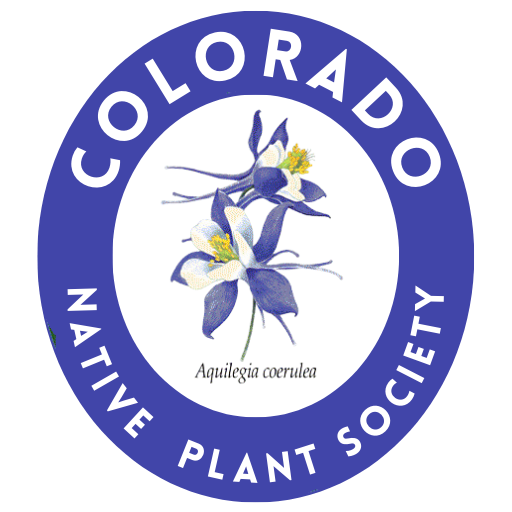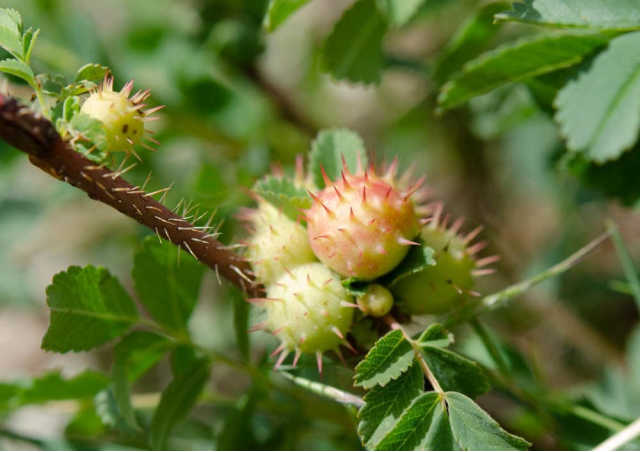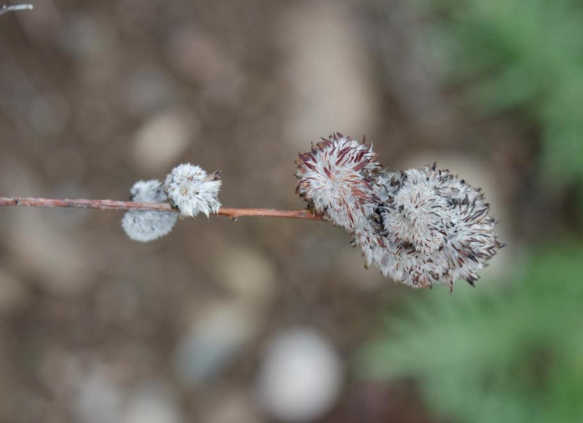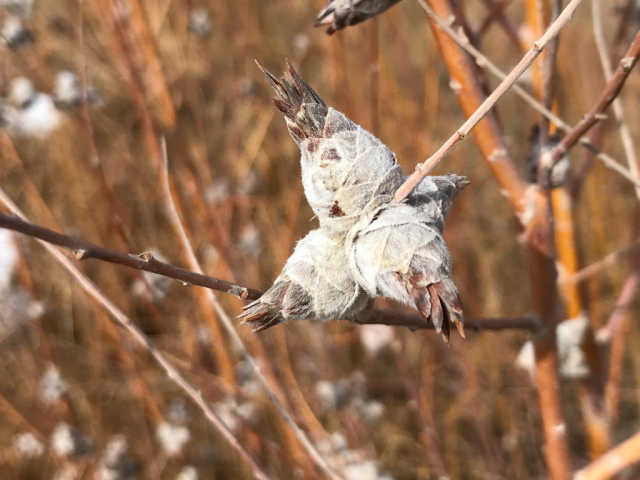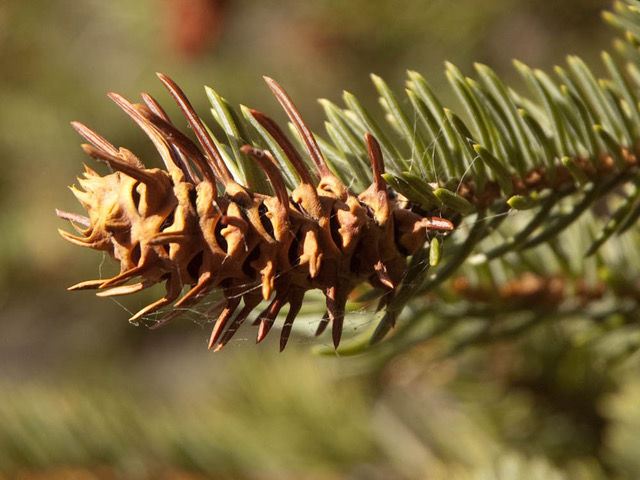This time of year exploring around our grasslands and forests you can see many interesting things relating to native plants even before the official growing season starts. For example the other day I saw these galls on a bur oak (Quercus macrocarpa) that are called bullet galls. Galls are a great example of the many ecological interactions our native plants (or almost native Colorado plants) have with other species in ecosystems, promoting overall diversity. Naturalists have been fascinated with these structures since time immemorial.
Bullet galls on bur oak created by cynipid wasps.
The basic story is that a female insect usually a wasp or an aphid or a midge lays eggs on the branch or buds of a tree or shrub. As the larva emerges it emits chemicals that stimulate the plant to make a gall structure which protects the larva from predators and also can provide food for the larva.
The structures sometimes are so unique that just looking at them you can tell what kind of insect made them. They can look like a seed cone, or ball or wooly structure or even a thorny ball in the case of roses. In the case of the bullet gall the story is more involved. These galls are formed by cynipid wasps (family Cynipidae) belonging to the genus Disholcaspis.
Galls on sagebrush (Artemisia dracunculus).
Pine cone galls on coyote willow (Salix exigua). Created by Willow Pinecone Gall Midge, Rabdophaga strobiloides (family Cecidomyiidae).
Galls are clustered together and produce secretions to attract ants, yellow jackets and other predators including other species of wasps. Studies have shown that these predators tend to protect the galls and their larva from insects that can attack or kill the larva. So its quite an amazing relationship that develops between all these insects and a tree or shrub. Similar species of wasps infect gambel oaks as well.
You can see galls of every shape and color. The colors can change over the year. While summer and fall are generally the best times to look for them, many can be seen in winter as well. Galls are most commonly seen on members of the rose family, willow family and on oaks. Quite common on both native and ornamental spruce species. They can be bumps on leaves, swellings on twigs or branches, or unique woody structures. Common ones occur on coyote willow, gambel oak, snowberry, woods rose, sagebrush, cottonwoods and many others.
Galls on woods rose. These like the oak galls are created by cynipid wasps.
Cone-like gall created by the Cooley gall adelgid on spruce trees. The gall looks just like a cone!
You can get field guides to identifying and learning about galls. I have one written for California and the Southwest that is helpful for figuring out at least the general group of insect that creates the galls. There is a link below for a more general guide to western plant galls. In general galls are not considered harmful to the host plant, but its a great example of when we maintain diverse habitats with native plants it can lead to many interesting and complex interactions with all the insects and other wildlife in the area. Always something new to learn out there.
Have you seen any interesting plant galls on your walks or travels? Please share your observations! Scroll down for box to ask questions or make comments.
All photos by the author.
Paul Alaback
Professor Emeritus of Ecology
University of Montana
Colorado Native Plant Society
palaback@gmail.com
Field Guide to Plant Galls in Western US
Cooley Spruce Gall Adelgids
